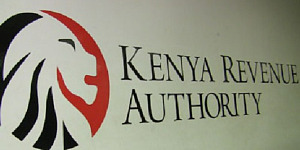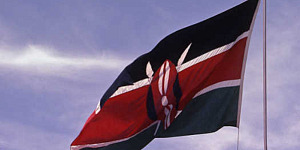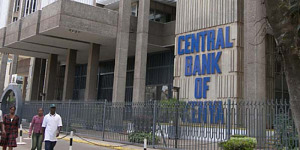Fitch Ratings has affirmed Kenya's Long-Term Foreign-Currency Issuer Default Rating (LTFC IDR) at 'B+' with a Stable Outlook.
Key Rating Drivers
The 'B+' rating reflects Kenya's high public and external debt levels and the uncertain pace of fiscal adjustment balanced against a strong and stable growth outlook.
Kenya's public finances are a rating weakness. A combination of structural and administrative issues has caused revenue/GDP to stagnate in recent years. General government revenue has fallen to an estimated 17.5% in the fiscal year ending June 2019 from a recent high of 19% of GDP in FY15. Some of the inability to raise revenue stems from agriculture composing a large component of the economy, with most of the non-export agricultural output coming from untaxed smallholders. Weak tax compliance and expansion of tax exemptions have also hampered revenue growth. The most recent budget and the Finance Bill 2019 include an increase in capital gains tax, new excise taxes, and a widening of the withholding tax. These revenue measures will help to increase revenue, but to less than the 20% of GDP targeted in the FY20 budget.
In FY19, the fiscal deficit expanded to 7.8% of GDP after narrowing to 7% in FY18. The slowdown in large infrastructure development programmes has lowered capital expenditure costs, with capex falling below 6% of GDP from an average of 8.1% in FY15 to FY17. In Fitch's base case scenario, the government's shift in focus towards the "Big Four" public spending priorities of food security, universal health coverage, housing and manufacturing could lead to less expenditure on large, foreign-financed infrastructure projects. Fitch expects that Kenya will achieve modest deficit reduction in FY20 and FY21, but public budgeting deficiencies and an inconsistent forecasting record mean that the pace of current expenditure is uncertain. Further, high debt servicing costs will put pressure on spending. The government's interest costs are 22.1% of revenue, which is twice the 'B' median.
Fiscal policy was a key focus of Kenya's 2016 precautionary IMF Stand-By Arrangement. The programme ended in 2018 before completing the second review, as Kenya was unable to meet the programme targets on narrowing the fiscal deficit and repealing the interest rate cap instituted in September 2016. The recent repeal of the interest rate cap could facilitate a renewed engagement with the IMF, but in Fitch's view the pace of fiscal consolidation remains IMF's biggest concern.
Fitch assumes the general government debt-to-GDP ratio will continue increasing through FY22 to 64.8% before easing very gradually to 60.5% by 2028. Our projections are less optimistic than that (those?) of the government, which sees debt stabilising in FY20 and falling to 54% by FY24. General government debt reached 61.3% of GDP at end-FY19, slightly above the current 'B' median (57.5%). In November 2019, Kenya's Parliament approved a change to the existing debt limit, moving it to a nominal limit of KES9 trillion from 50% of GDP in net present value terms. The new debt limit is in line with the forecasts in the National Treasury's most recent Budget Review and Outlook Paper, which sees debt rising to just below the KES9 trillion ceiling by FY24.
Fitch forecasts GDP growth to slow to 5.6% in 2019 from 6.3% in 2018. Kenya's economy has slowed in 1H19 as drought impacted agricultural output, although growth in the services sectors picked up. Fitch expects annual average inflation to rise to 5.4% in 2019 and remain within the Central Bank of Kenya's (CBK) target range of 5% +/-2.5pp over the medium-term, which could allow the central bank to further lower the main policy rate. The CBK lowered the rate by 50bp to 8.5% in November 2019.
Kenya's track record of macroeconomic stability is a support for the rating. Kenya has exhibited lower growth volatility than peers, with GDP growth between 4.6% and 6.3% and single-digit inflation since 2012. Fitch expects GDP growth to slow around the 2022 general elections, broadly in line with previous elections. Medium-term growth prospects are favourable, supported by an improving business environment and infrastructure investment.
Kenya' external metrics have gradually improved over time. We expect the current account deficit (CAD) to narrow to 4.3% of GDP at end-2019, broadly in line with the 'B' historical median (4.4%). The combination of a narrowing trade deficit, increasing remittances and travel receipts, underpins the current account adjustment. Remittances alone have grown to 3.1% of GDP in 2019 from 2.3% in 2014. Fitch expects that the shift in priority from big infrastructure projects to the 'Big Four' will keep the CAD below 5% of GDP through 2021, after 4.9% in 2018. The CAD averaged 7.5% of GDP in the years 2013 to 2017, as the import bill was hit first by high oil prices and then by increasing capital imports.
Kenya has experienced an increase in inward foreign direct investments (FDI), which rose to USD1.6 billion in 2018 after having fallen to USD400 million in 2016. We assume that the recent increase in FDI will be broadly sustained through 2021, but there is a risk that the increase may be the result of one-off investments. The inability to increase FDI and other non-debt-creating flows in the past has increased Kenya's reliance on public external debt to finance the CAD. Public net external debt will increase to 127% of current external receipts in 2019, up from 33% in 2014 and twice the 'B' median. Kenya's reserve position eases some of the vulnerabilities associated with the high stock of external debt. Kenya's external reserves were bolstered by the issue of USD2.1 billion in Eurobonds in May 2019. Fitch forecasts reserves to reach USD8.6 billion (4.7 months of current external payments) by end-2019.
The Kenyan banking sector has experienced several years of persistently low loan growth, which has constrained economic growth. However, credit growth in the private sector recovered to 7% as of September 2019, from 2.5% in 2018. Credit growth is stronger among Kenya's biggest banks, which are adequately capitalised, well-funded, and profitable. A number of smaller banks are opaque and as a group pose some systemic risk, but ongoing consolidation in the sector will ease some of those risks. The sector's asset quality has worsened, with the ratio of non-performing loans (NPL) to total loans reaching 12.9% as of April 2019, according to the central bank. The NPL ratio has since fallen slightly and will be further helped by increasing credit growth following the repeal of the interest rate cap, which had led to credit rationing.
Structural factors constrain Kenya's sovereign ratings. GDP per capita is less than 60% of the 'B' median. Most governance indicators are on a par with the current 'B' medians, but Kenya scores poorly on Control of Corruption and Politically Stability pillars. Kenya has a specific history of instability around national elections, the next of which is scheduled for 2022.
Sovereign Rating Model (SRM) and Qualitative Overlay (QO)
Fitch's proprietary SRM assigns Kenya a score equivalent to a rating of 'B+' on the LTFC IDR scale.
Fitch's sovereign rating committee did not adjust the output from the SRM to arrive at the final LTFC IDR.
Fitch's SRM is the agency's proprietary multiple regression rating model that employs 18 variables based on three-year centred averages, including one year of forecasts, to produce a score equivalent to a LTFC IDR. Fitch's QO is a forward-looking qualitative framework designed to allow for adjustment to the SRM output to assign the final rating, reflecting factors within our criteria that are not fully quantifiable and/or not fully reflected in the SRM.
RATING SENSITIVITIES
The Outlook is Stable. Consequently, Fitch's sensitivity analysis does not currently anticipate developments with a high likelihood of leading to a rating change. However, the main factors that, individually or collectively, could lead to positive rating action are:
- A significant decline in government debt/GDP, for example due to a sustainable fiscal consolidation
- A significant decline in net external indebtedness, for example through higher FDI or export receipts
- An improvement in structural indicators, for example higher GDP per capita or an improvement in governance indicators
The main factors that, individually or collectively, could lead to a negative rating action are:
- Failure to stabilise government debt/GDP levels over the medium-term
- Widening of the CAD or increases in net external debt, for instance through a fall in external receipts caused by falling exports or remittances
Key Assumptions
The global economy performs broadly in line with Fitch's latest Global Economic Outlook (December 2019).
Lack of international investment position dataset means that there is no authoritative data on non-bank, private sector net assets. This does not affect the indicators that feed into the SRM, but may lead to an overstated level of net external debt.
ESG Considerations
Kenya has an ESG Relevance Score of 5 for Political Stability and Rights as World Bank Governance Indicators have the highest weight in Fitch's SRM and Kenya has a history of significant social and economic disruptions around elections. This is highly relevant to the rating and a key rating driver with a high weight.
Kenya has an ESG Relevance Score of 5 for Rule of Law, Institutional and Regulatory Quality, and Control of Corruption as Kenya scores higher than peers on the Government Effectiveness pillar of the World Bank's Governance Indicator, but lower on Control of Corruption pillar. This is highly relevant to the rating and a key rating driver with a high weight.
Kenya has an ESG Relevance Score of 4 for Human Rights and Political Freedoms as Kenya scores higher than peers on the Voice and Accountability pillar of the World Bank's Governance Indicators. This is relevant to the rating and a rating driver.
Kenya has an ESG Relevance Score of 4 for Creditor Rights as willingness to service and repay debt is relevant to the rating and a rating driver, as for all sovereigns.







































